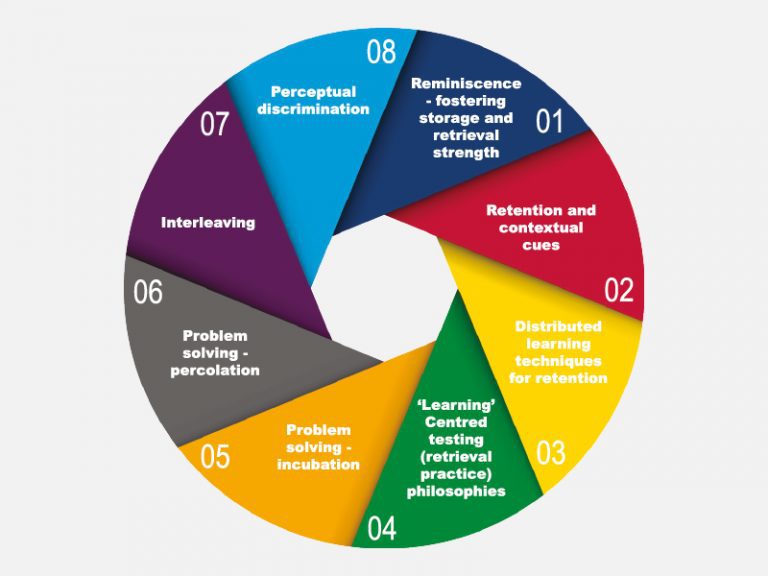Perceptual thinking is the process whereby the response to information or stimuli can be improved through experience in specific environments via various tasks and methods.
This way of thinking can be integrated into experiential learning programmes to make workplace training more effective.
At MDA Training, our experiential approach to workplace training incorporates perceptual thinking methods on a consistent basis. We’ve listed some of the critical stages and components of our structured approach below:


Structuring your experiential training programme towards your specific business needs and adopting visual methods of learning such as virtual reality will increase the retention of information as opposed to feeding employees generic industry data. These methods aim to build storage strength to allow employees to recall information they have learned and build retrieval strength through focused learning tests to assess how well employees are taking on information.

Perceptual thinking methods can increase retention by reinstating the environment of the original workplace training. If an employee becomes familiar with the learning environment they are in when learning something beneficial for a second or third time; they are more likely to retain it. By creating contextual cues in the learning environment that can later be replicated and reinstated in the application environment aids the development of contextual clues, thus aiding learning embedment.

By using methods like e-learning and microlearning, employees can be flexible with how they learn and not become overwhelmed by information. The ‘spacing effect’, whereby key information is spread out over time as opposed to being given at once helps to achieve this. Applying methods that adhere to Jost’s Law, which explains how an older memory will decay slower than a newer memory of the same strength means employees will be able to access old information they have learned easily. We space out our experiential learning and drop in contextual cues over two months to increase retention this way.

Experiential learning methods are designed to promote forced recall. When distracted by other things or not focusing on a topic, merely recalling information can provide the mirage of learning. By implementing forced recall by testing employees soon and often, retrieval strength and retention increase. Our learning tests cue the mind to key messages by adopting a pre-test, learn and post-test approach to give employees extensive knowledge and tune delegates to key learning. Incorporating ‘desirable difficulty’ is also important in experiential methods, giving employees a difficult yet accomplishable task to increase learning retention.

Deductive and inductive reasoning is used in perceptual thinking and can benefit experiential learning programmes. By making specific conclusions from generic information and making broad generalisations from specific observations, employees can generate problem-solving solutions. By also preparing effectively for problem-solving and implementing healthy distractions from the task at hand to encourage illumination, learners will engage with and retain information. Incubation can be improved by challenging functional fixedness and fixed assumptions of how things work in business. Selective forgetting of rigid fixedness will also help to reduce overall fixedness.


Percolation allows businesses to think of new solutions to industry problems as part of their training methods. The Zeigarnik Effect explains how unfinished or interrupted tasks are more likely to be retained at the front of one’s mind, meaning they are more likely to complete tasks and set clear goals. Subconsciously assigning goals becomes easier when the task is a priority, and this can subconsciously be achieved through memory-enhancing interruption and leaving tasks/problem solving on cliff-hangers.

Moving away from learning information in a specific order through interleaving allows for more effective experiential learning as employees will be able to draw on the information in future no matter what order it is presented to them. By adopting a theme of desirable difficulty alongside interleaving, employees can increase how quickly they retain information and accumulate more information.

By adopting perceptual chunking, employees can react to stimuli that are relevant and structured to achieve success. By exposing employees to new methods of learning and seeing how they respond through perceptual discrimination, businesses can decide how their employees learn best, linking this with interleaving. The advantages of this are that employees will be able to self-correct when learning by remembering essential information without thinking.
All of the ways in which perceptual thinking and learning methods are applied directly benefit our training programmes. We believe that your employees benefit most from learning in flexible and active ways. By implementing these methods alongside simulations and workshops specifically tailored to your business, we can achieve an effective training service for your relevant industry.









